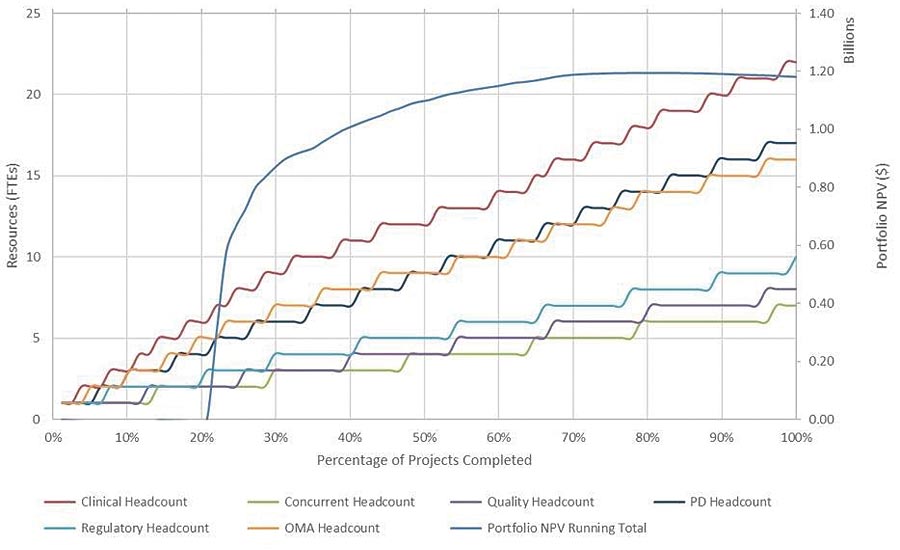Organizations in the medical device industry are in the process of gaining—and maintaining—their European Union Medical Device Regulation (EU MDR) compliance certifications. Prioritizing work at the onset of such a large program is a complex task. In PMP Exam Prep, author Rita Mulcahy suggests an organization should complete—along with resource planning—a prioritization matrix (Mulcahy, 2018). A prioritization matrix allows an organization to determine what policies, procedures, and processes should be changed from a high-level view downward and identify where resources should be used first. In the article, “Multi-person decision-making for requirements prioritization using Fuzzy AHP,” Bajaj and Arora state that system stakeholders look at concerns of a system’s effectiveness without consideration of how their requirements impact other stakeholders. This lack of consideration creates conflicting project requirements that, rather than improving a system process, make it less effective. Therefore, the prioritization model must have clear and concise variables from all stakeholders to create results per the intended purpose or objective, not on stated and conflicting requirements.
The Matrix in Practice
Various prioritization models and approaches may be used in an organization’s EU MDR program, such as action prioritization matrix model (Mantelow et al., 2018) and project prioritization matrix model (ASQ, 2016). Three approaches can be chosen from to provide the best result, which are full analytical criteria that derived from the analytic hierarchy process (AHP) of Thomas Saaty in the 1970s, combination ID/matrix, and consensus criteria (learn more in The Quality Toolbox, Nancy Tague, 2005). These models could focus on using relationships and weighted variables for determining correlations to set or recommend priorities. Using the weighted variable approach allowed one anonymous team to determine a suggested or recommended product remediation prioritization for their EU MDR activities as well as resource expansion during the program. The term suggested prioritization is used due to various confinements and constraints that must be worked through based on the organization’s risk appetite as the program progresses. The model used by the team referenced in this article accounted for the portfolio’s net present value, functional resources, and resource expansion to complete the program.

Figure, Anonymous (2018)
As a first-pass result, critical products not tied to revenue were on the bottom of the list when they should have been included in the top priorities. A multiplier was used in relation to remediation complexity; however, revenue remained the most dominant variable in the model. Therefore, the model has become more robust and retried while taking into account complexities, confinements, and constraints.
Citing another example of prioritization matrices, ASQ Inspection Division’s leaders use prioritization constantly to streamline board meetings. Prior to sending the agenda to board members, a committee pares down the document to the critical items, action items, and status reports to be covered. Doing so has allowed the division to reduce meeting time from 60 to 30 minutes. The division also benefits from this process by determining which projects to undertake, ensuring members receive high-quality, value-added materials and experiences each year. With many organizations going through constant changes, increased utilization of prioritization matrices and quality tools should occur. I look forward to sharing more on prioritization models, EU MDR, and the Inspection Division as we continually learn and grow in our world of quality.
Calcelia Bryson is a member of the ASQ Inspection Division.
References
ASQ Service Quality Division (2016). Project prioritization matrix. Retrieved from http://asqservicequality.org/glossary/project-prioritization-matrix/.
Bajaj, P. and Arora, V. (2013). Multi-person decision-making for requirements prioritization using Fuzzy AHP. ACM SIGSOFT Software Engineering Notes 38(5), 1-6. https://dl.acm.org/citation.cfm?id=2507302.
Mantelow, J., Jackson, K., Swift, C., Edwards, S., Bishop, L., Pearcey, E., Mugridge, T., Bell, S., Robinson, R., and Bruce, E. (2018) The action priority matrix: Making the most of your opportunities. Mindtools. Retrieved from https://www.mindtools.com/pages/article/newHTE_95.htm.
Mulcahy, R. (2018). PMP Exam Prep (9th ed.). USA: RMC Publishing.

